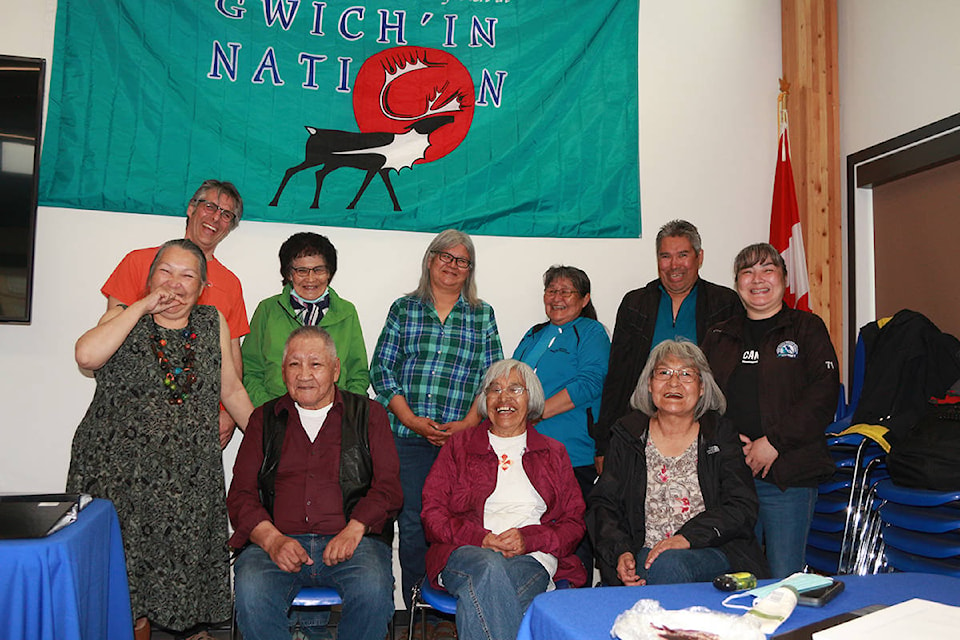An Inuvik-based working group is close to completing a new book to help preserve the many Gwich’in languages.
Meeting June 10-11 at the Nihtat Gwich’in Council Chambers, the Language Champion program practiced sentence structure and verb tenses, building on an earlier immersive camp where the 14 participants spoke exclusively Gwich’in.
Now, their work has been crystallized into a book to help teach two distinct dialects of Gwich’in — Teetl’it and Gwichya. The project is part of the Gwich’in Tribal Council’s (GTC) Gwich’in Language Revival Program, which has been in operation for just over two years.
“What we’re looking at here is the result of our collaborative work,” said GTC Language Revitalization Specialist Andrew Cienski, who is overseeing the project. He said the group was proofreading and going over the sentences in the book to ensure accuracy.
Called Dinjii Zhuh Ginjik Ihłak Ge’tr’oonahtan, roughly translating to “first level instruction of Aboriginal language,” the book is nearly 300 pages long, includes an audio edition and is about a year in the making. The project has also served as a means for many people to get in touch with their culture as the group had to first learn their way around the language themselves. Leading up to the two-day proofreading session, the group met twice in immersive camps, first for two weeks and then four more later on to learn to speak and pronounce key words.
Since then, people who are more stronger in the language were paired with a learner. Each member of the group was loaned an iPad to assist them as they continue their education and met with one another online.
“You have to let yourself be confused,” said Cienski. “That’s part of the learning process.”
Many of the participants are Elders hoping to speak Gwich’in with their grandchildren, many of which are involved in the Children’s First branch of the Gwich’in Language Revival program, called Gwich’in Language Nest and taught by Elder Mabel English.
With only 550 fluent speakers of Gwich’in worldwide and 300 in Canada, the working group is racing against time. Gwich’in is currently listed in the United Nations Atlas of the World’s Languages in Danger.
So far, their efforts are paying off, with many participants commenting that they’re starting to have breakthroughs in language acquisition.
“I can speak and hear Gwich’in in my dreams,” said Ruth Wright. “So it’s in there somewhere. I just have to figure out how to pull it out.”
Work on the book is being finalized by the Language Champions, which should be finished by November. Cienski said he was expecting the book to be ready for the public at the start of the new year, either December or January. Graduates of the program may be eligible to work in the On the Land Program next year to reduce the burden on Elders.
To enroll your child in the Gwich’in Language Nest Immersion program, contact the Children’s First Centre at 777-3703. To volunteer with the Gwich’in Language Revival Program, contact the GTC at 777-7900.
